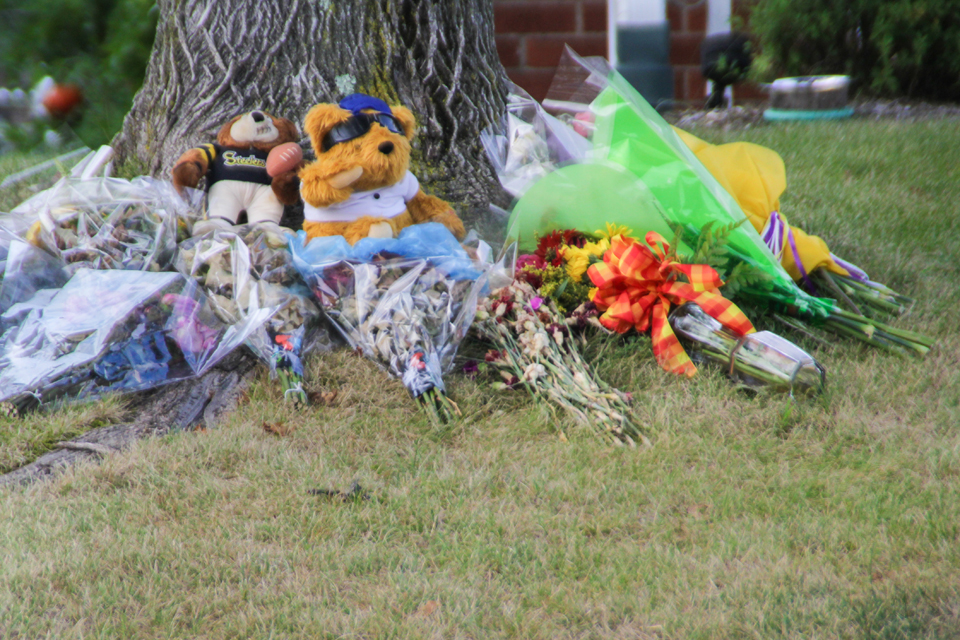Griffin Sendek | Features Editor
01/24/19
If you turn on the TV and flip through the channels, chances are you are quickly going to find some program retelling the story of some murder or unexplained death. These dime-a-dozen made-for-TV specials draw in a wide audience and are good for a captivating hour of entertainment.
What these shows don’t prepare you for is when the death they are depicting hits very close to home.
The first episode of a six-part limited series event, Smiley Face Killers: The Hunt for Justice, aired Saturday, Jan. 19, on Oxygen.
The first episode of the first season was titled plainly, “Dakota James.”
For those who are unaware, Dakota James was a 23-year-old Duquesne University graduate student who was last spotted in Downtown Pittsburgh on Jan. 25, 2017. On Mar. 6, 2017, his body was discovered in the Ohio River. The Allegheny County Medical Examiner’s office ruled James’ death an accidental drowning.
Dakota’s parents, Pamela and Jeff James, were in disbelief upon hearing the ruling, firmly believing there was foul play and that Dakota’s death was no accident.
“I knew 100 percent in my heart that someone did something to Dakota,” Pamela James said.
Following the verdict, the James family hired forensic pathologist and former Allegheny County coroner Dr. Cyril Wecht to review the evidence of the case independently.
The television series follows retired NYPD detectives Kevin Gannon, Anthony Duarte and Mike Donovan, as well as criminologist D. Lee Gilbertson, as they investigate the circumstances of several young men whose bodies were found in rivers. The detectives believe that these young men did not die of accidental causes, but rather were victims of a series of murders committed by the “Smiley Face Killers.” The predominant link between all the young men’s deaths was a smiley face graffitied nearby where the bodies were discovered.
The Smiley Face theory goes that there is a “well-structured, organized gang with cells in major cities across the United States,” Gannon told Oxygen, “who drug, abduct, hold the victims for a period of time before they murder them and place them in the water.”
This episode does not focus heavily upon the Smiley Face Killer theory, but instead deals primarily with investigating James’ death. The retired NYPD detectives, with the support of James’ parents, had a singular goal in mind: Find substantial evidence to reclassify his death from accidental to homicide, subsequently reopening the investigation for Pittsburgh authorities.
Almost the entirety of the episode is spent seeking hard evidence to prove one thing — that James’ body was in far too good a condition when he was found for him to have been in the water for 40 days. The state of the body seemed to be the only lead they had to go on, for it was investigated from multiple sources and reiterated to the point that it became repetitive upon viewing.
A significant portion of the investigation involves Dakota James’ parents. Multiple moments throughout the episode, we see the very raw emotional reactions of the parents. The documentary makes it clear that Dakota was not just another dead body, but an important part of a loving family and community.
The investigation was at a halt until the medical examiner released the autopsy photos to Pamela James, and at her own discretion decided to share the photos with the former NYPD detectives and Wecht.
Upon review of the photos — specifically, a photo of the back of James’ neck — forensic pathologist Wecht concluded that James was victim to ligature strangulation. Furthermore, according to Wecht, the photos displaying marks on the third and fourth fingers were characteristic of someone fighting to loosen a binding around one’s neck.
With this newly found evidence, the family, along with Wecht and the retired NYPD detectives, held a press conference announcing their findings to the public as an attempt to sway the opinion of the medical examiner to reclassify James’ death as a homicide.
This is where the episode ends, with a final note that to this day, James’ death is still classified as an accidental drowning.
Had the episode been primarily focused on attempting to prove the Smiley Face Killers at fault for James’ death, it would have left a decisively sour taste in my mouth. Having only been two years since James’ disappearance, he is still fresh in the minds of the family and Duquesne and Pittsburgh communities. The retired detectives played their cards right by keeping the conspiracy in the background, and pushing what they consider proof of homicide to the forefront.
I cannot dispute the findings of the retired NYPD detectives and Wecht. They did as thorough an investigation as they possibly could. The evidence put on display was immensely convincing and difficult to argue against. Yet, it does not like feel my place to put my own verdict on whether or not I believe James was murdered.
There is not enough evidence present, however, to make me honestly believe that James’ death was at the hands of the Smiley Face Killers. A short scene revealing that a smiley face was present at a nearby structure to where James’ body was found was in no way sufficient affirmation that James’ death was the handiwork of the Smiley Face Killers. The retired detectives were never able to find an exact location in which James’ body would have been dropped, therefore the presence of a smiley face is merely coincidental. I do not subscribe to conspiracy theories, and the Smiley Face Killers are nothing but that, a theory.




